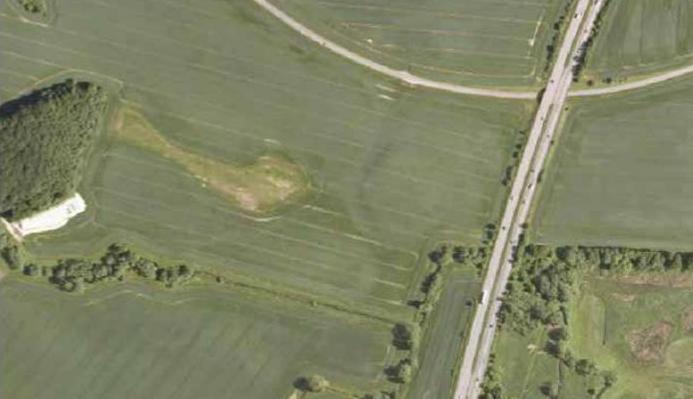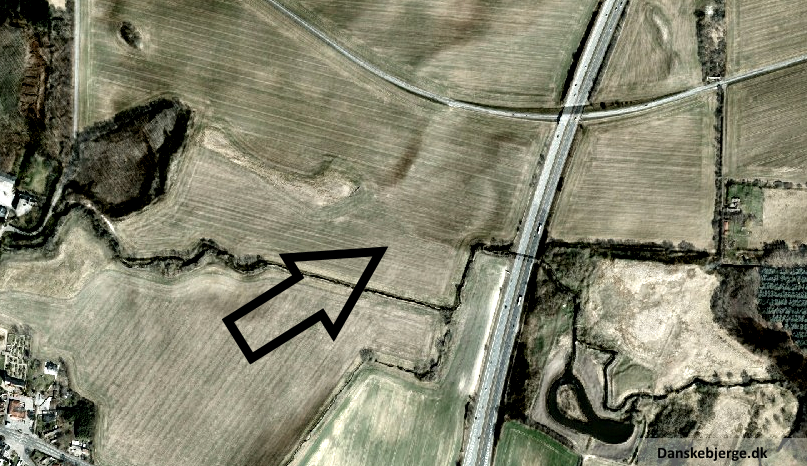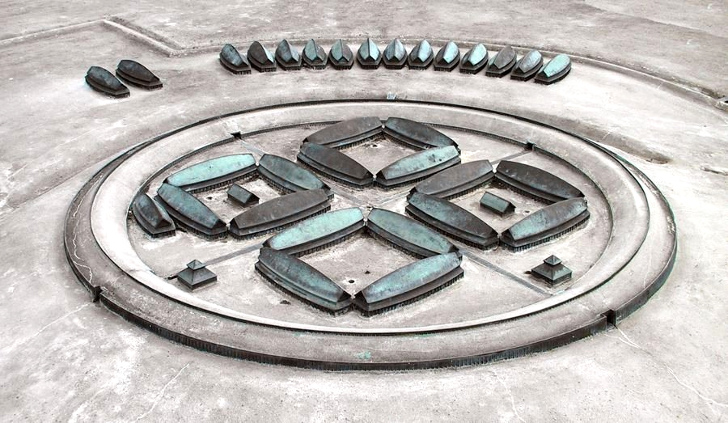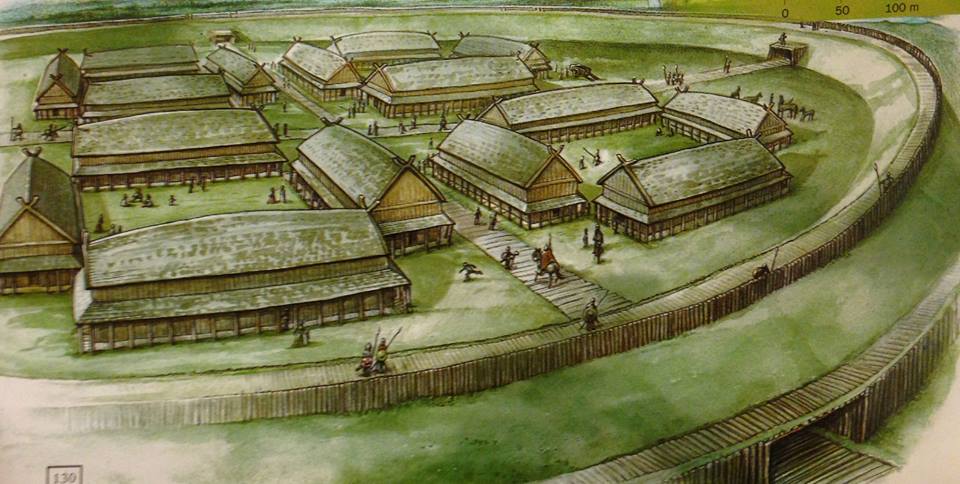The Vallo Ring-Fortress
Zealand, Denmark
 |
 |
|
Discovered in Summer of 2014, the first Viking Age fortress found in Denmark for the last 60 years is similar to the Trelleborg fortresses built by King Harald Bluetooth around the year 980. These circular fortresses are unique to Denmark. Measuring 145 meters (476 feet) from side to side, the Vallo Ring-Fortress is the third largest of five found in Denmark, recognizable as a Trelleborg fortress by the precise circular shape of the rampart and by the four massive gates located at the four points of the compass. The remaining four circular fortresses —located at Trelleborg at Slagelse, Nonnebakken at Odense, Fyrkat at Hobro, and the largest at Aggersborg near the Limfjord— have all been dated to the reign of Harald Bluetooth in the late 900s AD. Carbon-14 dating confirms that the fortress also dates from the same period. The construction of this fortress is similar to the one in Hobro and is thus likely to have been built by Harald Bluetooth as well. The five ring fortresses are nearly identical but, despite their impressive size, lack descriptions in ancient sources. The Vallø site is first mentioned in a 1682 land register as Borre Ring. |
|||
 Aerial view of the Ring Fortress of Fyrkat at Harbro. |
|||
A U.S. Air Force aerial photo from 1954 shows the site
as a circular shadow on the field. Echo-photography in November
1970 suggested that a trelleborg fortress may lie hidden at the
site, but excavations conducted there in 1971–72 by the Danish
National Museum left the embankment undated. In 2014, Professor
Søren Sindbæk of University of Aarhus first recognized a clear
pattern to the location of the other Trelleborg fortresses and
theorized that there was a fortress missing in eastern Zealand,
as they are each placed between 30 and 40 kilometres apart,
roughly a day's march. Precise laser measurements of the field
detected an almost invisible rise in the field with a clear
circular outline. Helen Goodchild, an expert in
archaeological geophysics from the University of York, then
performed detailed measurements that helped identify old pits
and embankments revealing a detailed image of the fortress, so
the team would know exactly where to dig without destroying
valuable evidence.
The Vallo Ring-Fortress, once encircled by a 7 metre-high and 10 to 11 meter-wide palisade built of pointed wooden stakes, is located in a field close to a highway in Vallø on the Danish island of Zealand, around 30 miles (48km) south of Copenhagen. In the Viking Age, the site overlooked the crossroads of the old high roads from Roskilde and Ringsted, which extended to the Køge River valley, then a navigable fjord and one of Zealand’s best natural harbors. Unusually, at this location, the landscape was radically altered to accommodate the massive ring fortress. Initially, there was not enough space for the circular structure, so tons of heavy clay were transported there to build up an artifical plateau. Early investigations have shown that the fortress was perfectly circular and had sturdy timber along the front. Probably due to the unique setting, the gates of fortress are not perfectly aligned north, east, south and west. So far two of the four gates have been examined, and conform to the Trelleborg pattern. Burnt timber in the gates suggests military activity of the kind found in Trelleborg at Slagelse. Unquestionably, the fortress was a genuine military facility and probably the scene of battle. A three-year excavation project by Museum Southeast Denmark and Aarhus University with the help of a 20 million kroner grant from the AP Møller Fund and 4.5 million kroner from Køge Municipality is expected to bring the secrets of the fortress to light. The Danish Castle Centre is working on preparing a project that will allow the public to keep track of the excavation of the fortress as it progresses, consisting of an observation deck expected to open on July 1st of 2016. |
|||
 |
|||
|
|
